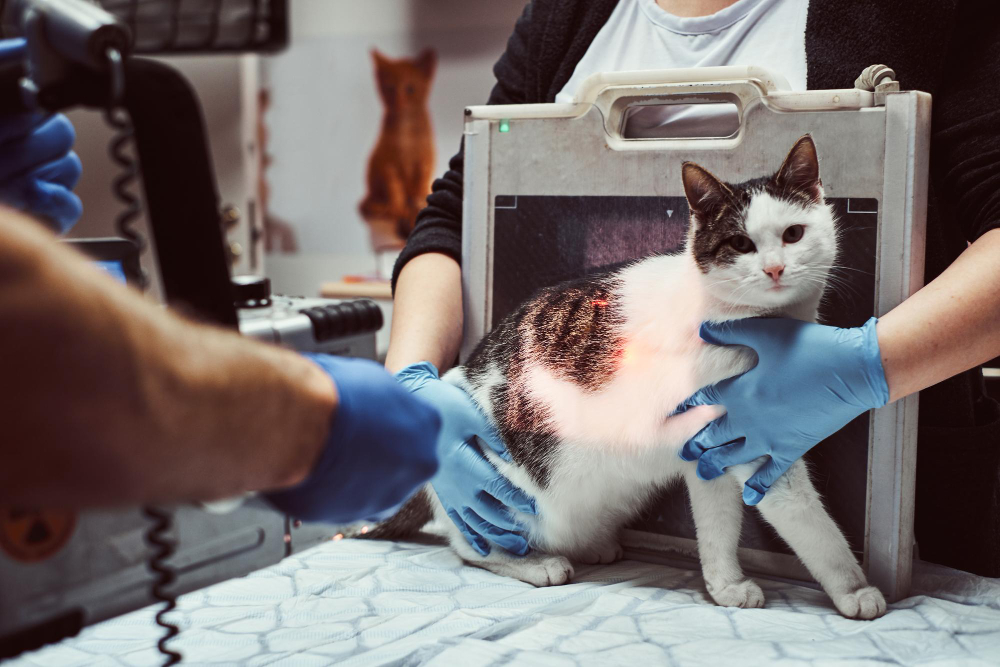Pet Diagnostic Imaging
In an effort to provide your pet with superior medical care, we perform diagnostic imaging services to supplement prognosis. Medical imaging employs the use of machinery to give a photographic representation of abnormalities or injuries.
Pet Diagnostic Imaging in Toney, AL
In performing diagnostic imaging, our Family Pet Cate veterinarian can provide a safe, accurate diagnosis and promptly treat the problem.

Pet Diagnostic Imaging
Reasons for diagnostic imaging:
- Assess facial swelling and dental problems.
- Detect possible bladder infections.
- Determine the location of broken bones or bone fractures.
- Evaluate the status of a pet’s pregnancy.
- Help identify if a pet has heart disease.
- Help obtain a biopsy sample.
- Locate foreign bodies that a pet might have swallowed.
Types of Diagnostic Imaging
CT Scan – CT scans provide 3D digital images that give the veterinarian a better view of soft tissues. When compared to other forms of imaging, CT scans depict more precise details.
Digital X-rays – Radiographs (X-rays) are usually the first test administered to evaluate your pet. Our office utilizes digital X-rays because they are more accurate and display a higher contrast. Because of their accuracy, technicians are able to take fewer images resulting in less pet discomfort. Digital X-rays also project less radiation than traditional X-rays, which allows your pet to avoid unnecessary exposure.
Ultrasound – Ultrasounds are another form of 3D imaging. This diagnostic is perfect for pets in sensitive situations (e.g., pregnancy), pets that might be suffering immense pain, or pets who are partially immobile. Ultrasounds are very gentle and are typically used to examine the abdominal region.
What does diagnostic imaging involve?
The process for getting images of your pet depends on what type of diagnostic is being performed and the size of your pet. For smaller pets, images are often taken with the pet lying down in various positions that allow our veterinarians to examine the problem area.
Pets with a disease or condition often feel increased anxiety and stress. Because of this stress, they can be uncooperative during digital imaging procedures. In these situations, our staff patiently tries to make your pet feel comfortable and guide them to cooperate. If a pet is aggressive or remains unwilling, the veterinarian may opt to mildly sedate your pet while performing diagnostic imaging. Also, for tests that require a pet to be absolutely still, anesthesia is typically administered.
If you have any questions about digital imaging services, please feel free to contact our office.
